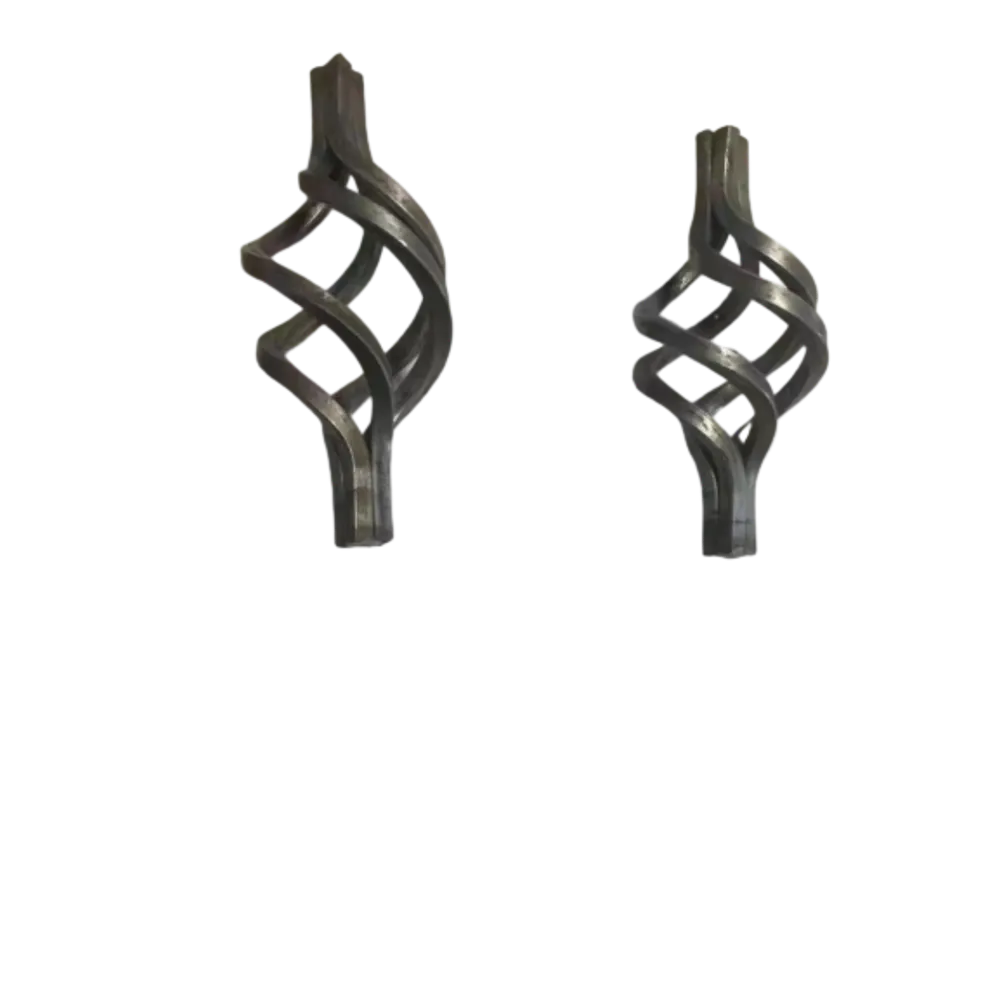rusting wrought iron
The Rusting of Wrought Iron Understanding the Process and Implications
Wrought iron, a historic material known for its malleability and durability, has been widely used in construction, decorative arts, and various engineering applications. However, despite its commendable properties, wrought iron is not impervious to corrosion. The process of rusting—specifically the oxidation of iron—poses significant challenges to the longevity and preservation of wrought iron structures and artifacts. This article explores the phenomenon of rusting in wrought iron, the factors that contribute to the process, and the methods that can be employed to inhibit rust formation.
The Chemistry of Rusting
Rusting is primarily a chemical reaction that occurs when iron interacts with moisture and oxygen in its environment. The fundamental equation for the rusting of iron can be simplified as
\[ 4Fe + 3O_2 + 6H_2O \rightarrow 4Fe(OH)_3 \]
This reaction results in the formation of iron hydroxide, which further dehydrates to form iron oxide, commonly known as rust. Rust is typically identified by its reddish-brown color and flaky texture. While rust may superficially appear as a minor nuisance, its formation can lead to significant structural weaknesses if left unchecked.
Conditions Favoring Rust Formation
Several factors can accelerate the rusting process in wrought iron. High humidity and the presence of water are perhaps the most critical contributors. In areas with frequent rainfall or high moisture levels, the likelihood of rust formation increases dramatically. Additionally, the presence of salts, such as those found in coastal environments or due to de-icing agents in winter, can further exacerbate corrosion. Salts facilitate electrochemical reactions that promote rusting by enhancing the conductivity of water, allowing for a more efficient transfer of ions.
rusting wrought iron

Temperature also plays a crucial role; higher temperatures tend to accelerate chemical reactions, including oxidation processes. Moreover, the presence of pollutants such as sulfur dioxide or carbon dioxide in the atmosphere can lead to the formation of acids, which can corrode iron surfaces more aggressively.
Preventative Measures
To combat the rusting of wrought iron, several preventative measures can be implemented. Primarily, protective coatings play a vital role in shielding iron from environmental factors that promote rust. Paints, galvanization (the application of a protective zinc coating), and powder coating are all effective methods of providing a barrier between wrought iron and the elements. Additionally, applying oils or wax can create a moisture-repelling layer that minimizes direct contact with water.
Regular maintenance and inspections are equally critical. Detecting early signs of rust allows for timely intervention, which can include sanding down rust spots and applying rust converters or inhibitors that chemically transform rust into a stable compound and prevent further deterioration.
Restoration of Rusted Wrought Iron
When wrought iron objects or structures have already succumbed to rust, restoration becomes necessary. This process usually involves removing the rust through mechanical means like sanding or sandblasting, followed by appropriate treatment to mitigate future corrosion. After cleaning, it is essential to apply protective coatings to ensure that the iron is shielded from moisture and oxygen in the future. The restoration not only revives the appearance of the wrought iron but also extends its lifespan significantly.
Conclusion
While wrought iron possesses remarkable properties that have made it a favored material throughout history, its susceptibility to rusting cannot be overlooked. Understanding the chemical processes involved in rust formation, along with the environmental factors that accelerate it, is crucial for anyone working with wrought iron, whether in construction, art restoration, or historical preservation. Through diligent maintenance, the application of protective measures, and timely restoration, the effects of rust can be managed effectively, thereby preserving the beauty and integrity of wrought iron for generations to come.
-
Wrought Iron Components: Timeless Elegance and Structural StrengthNewsJul.28,2025
-
Window Hardware Essentials: Rollers, Handles, and Locking SolutionsNewsJul.28,2025
-
Small Agricultural Processing Machines: Corn Threshers, Cassava Chippers, Grain Peelers & Chaff CuttersNewsJul.28,2025
-
Sliding Rollers: Smooth, Silent, and Built to LastNewsJul.28,2025
-
Cast Iron Stoves: Timeless Heating with Modern EfficiencyNewsJul.28,2025
-
Cast Iron Pipe and Fitting: Durable, Fire-Resistant Solutions for Plumbing and DrainageNewsJul.28,2025
-
 Wrought Iron Components: Timeless Elegance and Structural StrengthJul-28-2025Wrought Iron Components: Timeless Elegance and Structural Strength
Wrought Iron Components: Timeless Elegance and Structural StrengthJul-28-2025Wrought Iron Components: Timeless Elegance and Structural Strength -
 Window Hardware Essentials: Rollers, Handles, and Locking SolutionsJul-28-2025Window Hardware Essentials: Rollers, Handles, and Locking Solutions
Window Hardware Essentials: Rollers, Handles, and Locking SolutionsJul-28-2025Window Hardware Essentials: Rollers, Handles, and Locking Solutions -
 Small Agricultural Processing Machines: Corn Threshers, Cassava Chippers, Grain Peelers & Chaff CuttersJul-28-2025Small Agricultural Processing Machines: Corn Threshers, Cassava Chippers, Grain Peelers & Chaff Cutters
Small Agricultural Processing Machines: Corn Threshers, Cassava Chippers, Grain Peelers & Chaff CuttersJul-28-2025Small Agricultural Processing Machines: Corn Threshers, Cassava Chippers, Grain Peelers & Chaff Cutters












